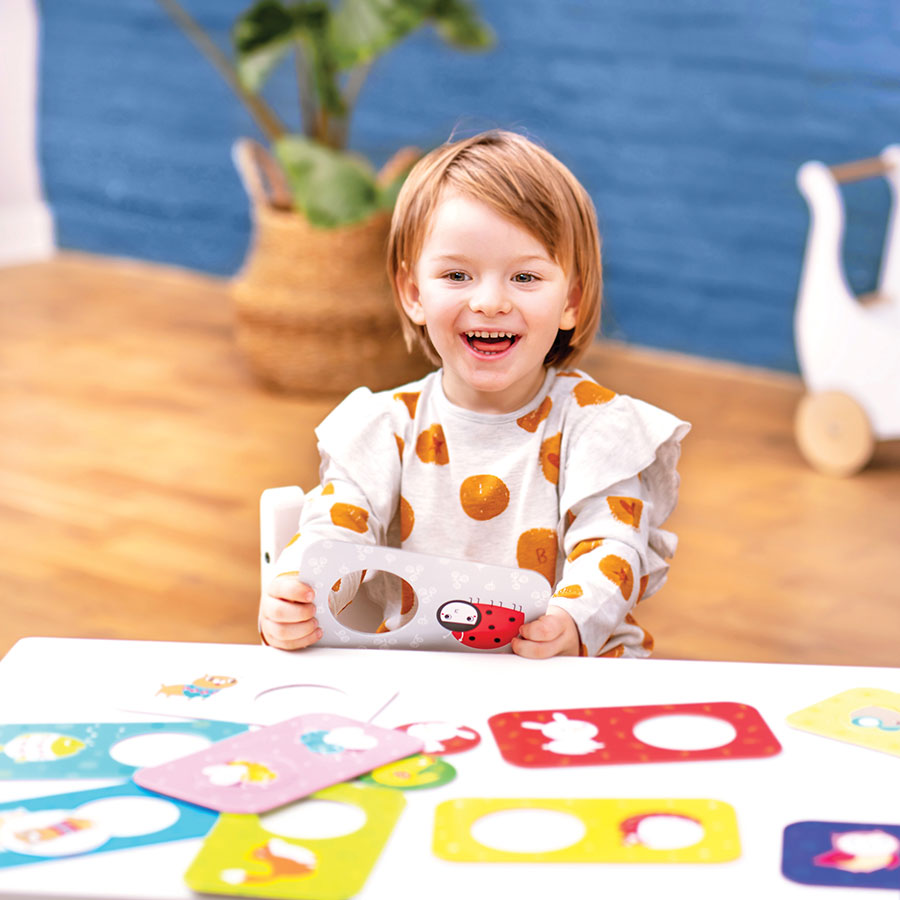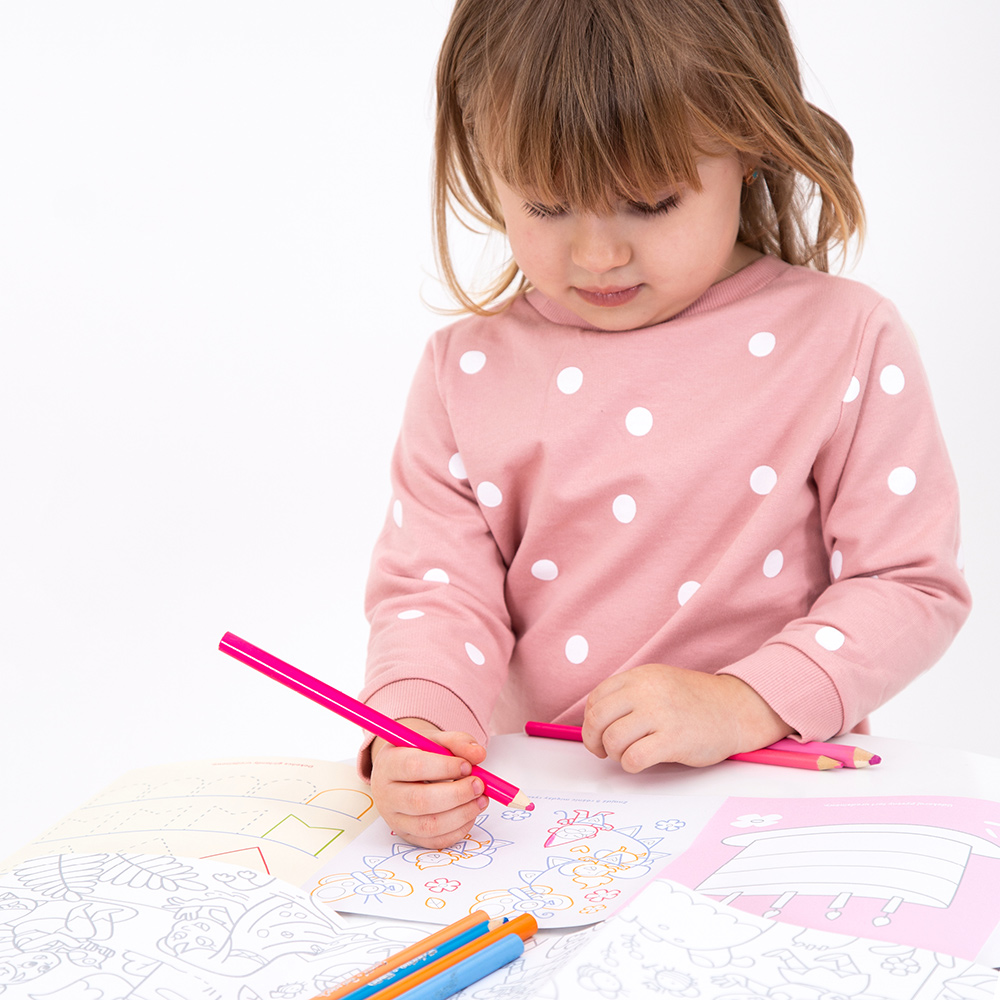Toying with colors
Children absorb knowledge about the world around them with all of their senses. And as it happens, they are surrounded by color. Color perception is a very important skill! Even small children want and can learn to distinguish and name colors. The best part is that learning colors can be so much fun!
Seeing color
How should you teach a child about colors? This is no difficult task – we live in a colorful world. The eye receives stimuli and the brain interprets these messages. Children’s eyesight develops dynamically in the first year of life: a newborn sees very little (you can read more about this in the article “The importance of playtime with your newborn baby”, while the vision of a one-year-old almost rivals that of an adult. Children can distinguish a full range of colors at this age. As children develop, they learn to interpret what they see.
Comprehensive development games will allow your child to hone their senses (see our ideas for related games!). Train your child’s memory, because life experiences allow children to accumulate and learn to interpret knowledge about the world.
How should you teach a child about colors?
The environment you live in stimulates brain activity, and is a catalyst for the comprehensive development of your child. As a parent, you are your child’s best guide in the world, so stay close. Point out, talk about and name things, encourage your child to make their own discoveries and listen to everything that happens around you. You will soon learn how easy it is to teach your child colors when fun is the name of the game! Adjust the difficulty level to the developing skills and interests of your child:
- show your child objects of different colors and name them,
- look for objects of a specific color in your surroundings,
- discover colors with your child’s favorite fruits, vegetables, animals, vehicles…,
- look at pictures in books and explore the world around you,
- draw, paint and shape playdoh,
- give your child the freedom to approach coloring in a creative way; after all, the sky is not always blue and the sun is not always yellow,
- show your child different shades of the same color,
- invent creative games with colors, for example arranging sequences of colored beads or buttons according to a certain pattern,
- assemble puzzles!



As easy as 1-2-3
For children over a year and around 2-years-old, sorter puzzles and beginner puzzles consisting of two-pieces with a circle are perfect, because colors and shapes are a great topic for children who are curious about the world! Children can learn colors while perfecting their fine motor skills and hand-eye coordination. Having someone nearby, a parent or older sibling, who can show and name different elements, makes learning colors, as well as the names of animals, vehicles and the sounds they make, exceptionally entertaining.
Match puzzles to your child’s age and skills so that they are not too difficult or discouraging, or too simple, which leads to boredom. Created with the youngest explorers in mind, Banana Panda toys for learning colors for 1-, 2- and 3-year-olds include:
- First puzzles for children over 1-year-old, including Match the Buddies and Match the Baby puzzles, are adored by very young children.
- The Make-a-Match Puzzle Food Truck contains detailed elements of various colors and shapes, providing inspiration for creative and educational fun.
- How about games for young toddlers that teach colors? Educational games from the Suuuper Size Memory Game series provide versatile fun and learning, including colors.
- Color as much as possible! Discover the world of colors, explore possible color combinations and experiment together with coloring pages from the Looong Coloring Books series.



What do you say? Ready for color play?











